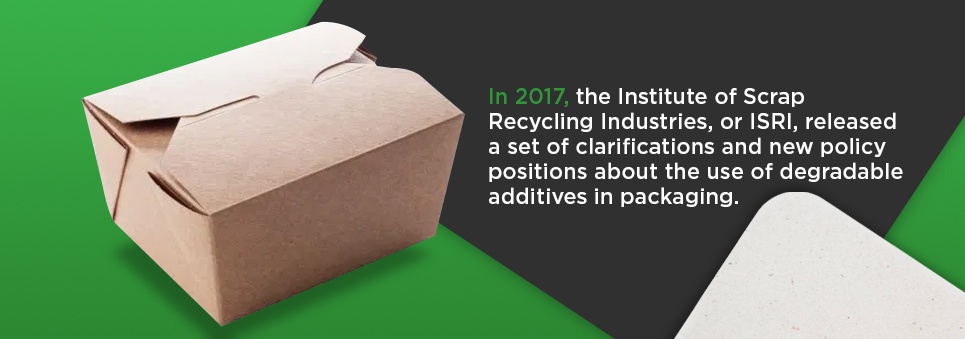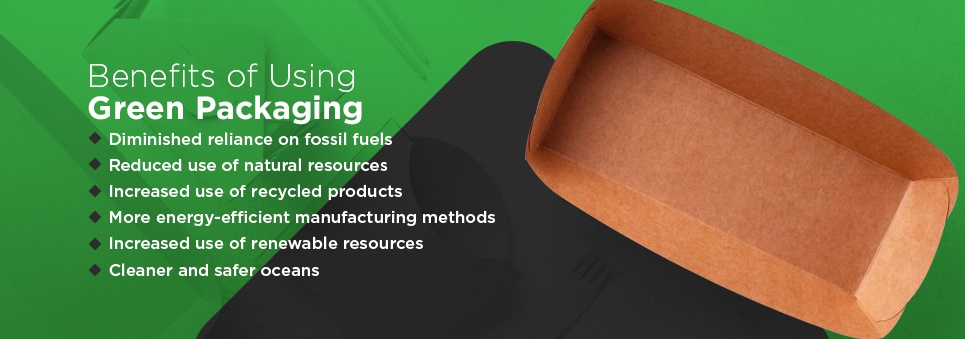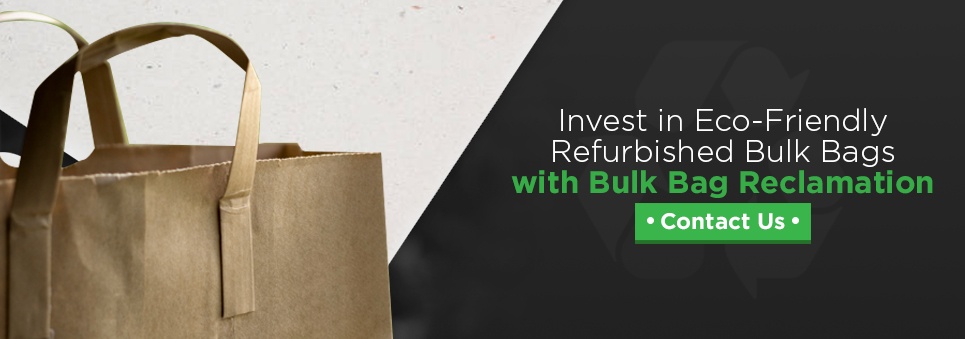What Is Green Packaging?
There’s a lot of packaging going around the world. Companies like Amazon, USPS, FedEx and UPS ship millions of packages a day. Amazon alone ships 5 billion Prime packages a year, or over 13 million packages a day. And industrial shipments add many more.
All these packages flying around the globe are great for our convenience, but they’re not always so great for the environment. Materials like cardboard boxes have low ecological impact, but many other materials, like plastic packaging and Styrofoam packing peanuts, will not biodegrade, and they’re not recyclable. And consumer packaging, such the rings around soda cans and bottles, adds even more waste.
According to the EPA, packaging contributes to an astonishing 77.9 tons of municipal solid waste per year — almost 30% of the total amount of waste. And packaging represents a staggering 65% of all household trash.
Packaging also contributes to the high costs of goods and trash disposal. Out of every $10 spent on commodities, $1 goes toward the cost of the packaging. That’s 10% of consumer spending going toward packaging that will ultimately end up in the garbage. Additionally, it costs about $30 per ton to recycle trash, $50 to transport it to the landfill and between $65 and $75 to incinerate it, which also releases toxic gases into the atmosphere.
For these reasons, many consumers report a serious investment in environmentally friendly packaging. According to a recent survey, 42% of consumers said packaging made from recycled or sustainable materials was crucial in their everyday purchase habits. And 57% of consumers reported that they are willing to pay more for environmentally friendly packaging.
Fortunately, there’s a simple step companies can take to help the environment and give ecologically minded shoppers what they want: investing in green packaging. Green packaging is reasonably priced and easy to implement, and it offers a variety of benefits both for consumers and for the planet.
Table of Contents
What Is Green Packaging?
Green packaging, also called sustainable packaging, uses materials and manufacturing techniques to diminish energy use and reduce the harmful impacts of packaging on the environment. Green packing solutions often include biodegradable and recyclable materials in preference to materials like plastic and Styrofoam. And green manufacturing processes take steps to reduce their power output and diminish the number of greenhouse emissions they produce.
Environmentally-Friendly Materials Used in Green Packaging
The biodegradable and recyclable materials used in eco-friendly packaging can take a variety of different forms:
- Bioplastics, or plant-based plastics
- Recycled paper and plastics
- Post-consumer products, such as recycled bulk bags
Below is a list of several specific green packaging examples currently in use on the market.
1. Starch-Based Biomaterial
Cornstarch-based packaging, in particular, has seen a remarkable surge in interest over the last decade or so. Though it has many properties similar to those of plastic, cornstarch-based packaging derives from corn and is much eco-friendlier than plastic packaging. It is versatile in its applications — manufacturers can use it to develop soda bottling, for example, or to make loose-fill packaging material. At many U.S. national parks like Yellowstone, the hotels and cabins use corn-based biodegradable containers to hold their amenities.
2. Other Plant-Based Biomaterials
Polylactic acid, or PLA, is a popular biodegradable plastic made from lactic acid. It can be used in place of traditional petroleum-based plastic and typically comes from agricultural waste, including plant starch from corn, sugarcane or beet pulp.
Another type of plant-based packaging product is Coca-Cola’s plant-based biomaterial, PlantBottle, which is a type of sugarcane-based biomaterial. Though PlantBottle dates from 2009, its material at the time was only 30% plant-based — but since 2015, 100% of the PlantBottle packaging has derived from sugar cane. Pepsi also has a 100% plant-based bottle that it began using in 2011. Pepsi makes its model from switchgrass, pine bark, corn husks and other natural materials. These plant-based models are fully recyclable and degrade much more quickly than their petroleum-based plastic forebears.
3. Biodegradable Packing Peanuts
New York, along with several other U.S. cities, has recently instated a ban on foam products, whose manufacture typically uses polystyrene rather than Styrofoam. The ban covers single-use clamshell packaging of the type used for some takeout containers, and it also governs materials such as packing peanuts and foam plates, cups and bowls.
To fill the void, companies have turned to alternative sources, including biodegradable packing peanuts. Biodegradable packing peanuts come from natural substances such as starch and wheat. They are lightweight and inexpensive, and they won’t harm marine life if they end up in rivers, lakes or oceans.
4. Corrugated Bubble Wrap
Traditional bubble wrap is fun to pop, but because it’s nonbiodegradable plastic, it’s less fun for the environment when it ends up in landfills. Recently, many companies have turned to an alternative: corrugated bubble wrap. Corrugated bubble wrap is corrugated cardboard, scored to create a cushioning surface and then repurposed as protective packaging for fragile materials.
5. Mushroom-Based Packaging
Though this may sound more like an adventurous wrap you might find in a vegan restaurant, mushroom-based packaging has proven successful in commercial packaging applications. Mushroom packaging makes use of agricultural waste held together in a packaging of mycelium, or mushroom roots. It is highly biodegradable and environmentally friendly. The Swedish retailer Ikea has notably begun using mushroom packaging to replace its Styrofoam packaging.
6. Recycled Cardboard and Paper
Though old standbys like recycled cardboard and paper don’t make headlines or hashtags the way some of the newer biomaterials do, old standbys like recycled paper and cardboard still have plenty to offer. Especially when sourced sustainably or made from 100% recycled materials, these materials make excellent choices for their biodegradability and low impact on the environment.
7. Post-Consumer Recycled Plastics
Though 100% post-consumer recycled plastics are not biodegradable, they still help the environment by reducing the need to generate new plastics from petroleum, which comes at a high cost in energy, carbon emissions and greenhouse gases. Where newfangled biomaterial packaging is not an option, post-consumer recycled plastics offer an environmentally friendly alternative.
8. Organic Fabrics
Organic fabrics, such as hemp, flax, recycled cotton and even palm, banana and pineapple leaves can replace plastic bags and containers. These materials biodegrade in 100 days, instead of the 500 to 1,000 years estimated for plastic bags, so they are incredibly eco-friendly.
9. Refurbished Products
These materials include packaging such as Bulk Bag Reclamation’s recycled bulk bags. Our recycled bulk bags, which receive careful quality screening before getting passed along to new consumers, reduce waste by reusing old products that still have a lot of life and value left.
By contrast, green packaging does not use any materials that are harmful to the earth. These materials include nonrecyclable plastics, Styrofoam and polystyrene, all of which require the use of virgin petroleum at a high cost to the environment and the quality of our air and water.
Solutions to Make Packaging Green
Green packaging solutions can take a few different forms. Below are a few sustainable packaging examples.
- Packaging that includes renewable resources: Cellulose, for example, which derives from wood pulp, is an attractive alternative to petroleum-derived polymers such as PET, PE and PP. Starch-based biomaterial is also an appealing alternative.
- Packaging with additives: Packaging additives, primarily biodegradable, oxo-degradable and photodegradable materials, help the packaging biodegrade faster and reduce the accumulation of packaging waste.
- Recyclable materials: These include familiar materials such as cardboard, plastic and metals.
- Compostable materials: These include the materials like the compostable molded-fiber bowls that some fast-casual restaurants now offer their patrons.
- Packaging reduction: Have you ever opened a bag of cookies or chips, only to realize that the amount of food takes up only half the space inside the package? Green packaging strives to reduce the amount of packaging per product it contains. Even if manufacturers cannot switch the type of material used in their packaging, they can take steps to optimize the packaging by reducing the amount of material used to make it.
Issues That Affect Some Sustainable Packaging Solutions
Though several of these methods represent a step forward, they also come with some unique environmental problems.
Degradable Additives
In 2017, the Institute of Scrap Recycling Industries, or ISRI, released a set of clarifications and new policy positions about the use of degradable additives in packaging. Degradable additives have not undergone comprehensive testing, and we do not know the extent of the risk they may pose to the environment and human health.
Additionally, even though the compounds may aid in degradation, some parts of the plastic compounds may remain in landfills, even after hundreds of years.
Finally, these additives may be detrimental to recycling processes because they contaminate other plastic and render it unrecyclable.
Recycling
In some municipalities, the cost of recycling makes it unfeasible. Recycling companies often cannot sell plastic and paper products, in particular, at prices that earn profits. So they charge extra fees to make up the difference.
Some cities — Philadelphia, for example — have started selling their recyclables to incinerators, which use the energy from the incineration to power the cities’ electrical grids. Because of the increased air pollution and carbon emissions it generates, however, this solution is far from perfect.
Cross-contamination limits the ability to recycle some materials as well. Even before China stopped accepting American recycling products, 91% of our plastic still ended up in landfills or oceans, mostly because of this issue of contamination. Even if consumers throw their used plastic products into recycling receptacles, there’s a strong possibility the plastic will end up polluting the environment anyway.
Compostable Materials
Many restaurants and public venues are turning to plant-fiber bowls and containers that consumers can feel good about composting. However, the chemicals used in these products come with a set of issues and unknowns. The fluorinated compounds used to make this packaging sturdy enough for use with food are “forever chemicals,” meaning they do not biodegrade — they remain as pollution in the earth long after the sustainable fibers have disintegrated. We also do not know what effects these relatively new chemicals may have on human health when used in proximity to our food.
Compostable materials sometimes also have questionable origins. The manufacture of some palm-fiber packaging, for example, has been associated with the deforestation of rainforest habitats in Malaysia.
Though none of these issues mean we should give up on recycling or stop developing alternative packaging materials, they do mean reusing old materials still plays a vital role in keeping the earth green for future generations.
Benefits of Sustainable Packaging
Why is sustainable packaging important? Using sustainable packaging offers a wide array of benefits for both consumers and the environment.
- Diminished reliance on fossil fuels: Green packaging strives to use as little fossil fuel energy as possible to reduce the carbon footprint of packaging manufacturing.
- Reduced use of natural resources: By designing minimal packaging, green packaging manufacturers help reduce the consumption of natural resources. This reduction helps ensure resources will remain on our planet for future generations.
- Increased use of recycled products: The more we can recycle post-consumer materials, the less energy and fewer resources we waste on creating all-new packaging. Recycled products use less water and less energy than their brand-new cousins. Green packaging often strives to meet goals such as using 100% post-consumer recycled paper products and recycled plastics.
- More energy-efficient manufacturing methods: Instead of relying on fossil fuels, green packaging strives to use alternative power, such as wind or solar energy.
- Increased use of renewable resources: Instead of using paper derived from cutting down trees, for example, some green packaging manufacturers use paper that comes from agricultural fibers instead.
- Cleaner and safer oceans. Plastic packaging, in particular, is notoriously harmful to marine life. According to the nonprofit group Plastic Oceans International, more than 8 million tons of plastic get dumped into our oceans every year. As a result of this dumping, biologists have found one out of every three species of marine mammals entangled in ocean plastic, and they have found an astonishing 90% of all seabirds with plastic pieces lodged in their stomachs. Making use of alternative sources of packaging helps mitigate these unfortunate conditions.
Invest in Eco-Friendly Refurbished Bulk Bags with Bulk Bag Reclamation
Now that you know about the importance of green packaging, why not invest in some for your business?
Bulk Bag Reclamation is proud to be part of the sustainable packaging movement. Our recycled bulk bags are premium-quality refurbished bags that come in a variety of different sizes and options, so there’s a perfect one for every need. See our inventory for green packing options. Their durable construction means they will last for years, so our customers get great longevity out of them. And they help keep the planet clean by staying out of landfills.
Buying used bags is environmentally friendly, but you’ll need to choose a dependable, experienced supplier to make sure you receive products of the highest quality. At Bulk Bag Reclamation, we have built a reputation for the quality of our refurbished bulk bags. Our bags formerly contained dry goods like food products, never toxic chemicals, so they are always safe to use. They have previously only experienced one use, and we’ve checked them thoroughly before sending them out again — so they’re always in good condition with a lot of life left.
One of the best ways to get a great deal on your recycled bags is to buy in bulk. We offer low pricing on our used bulk bags, so you can save more money and make sure you’ll always have a steady supply of high-quality bulk bags on hand.
To get excellent deals on environmentally friendly bags, buy in bulk from Bulk Bag Reclamations. Contact us by phone or online, or request a quote today.
Are you not sure what to do with empty bulk bags? We can recondition and recycle bulk bags. Sell us your bulk bags!





